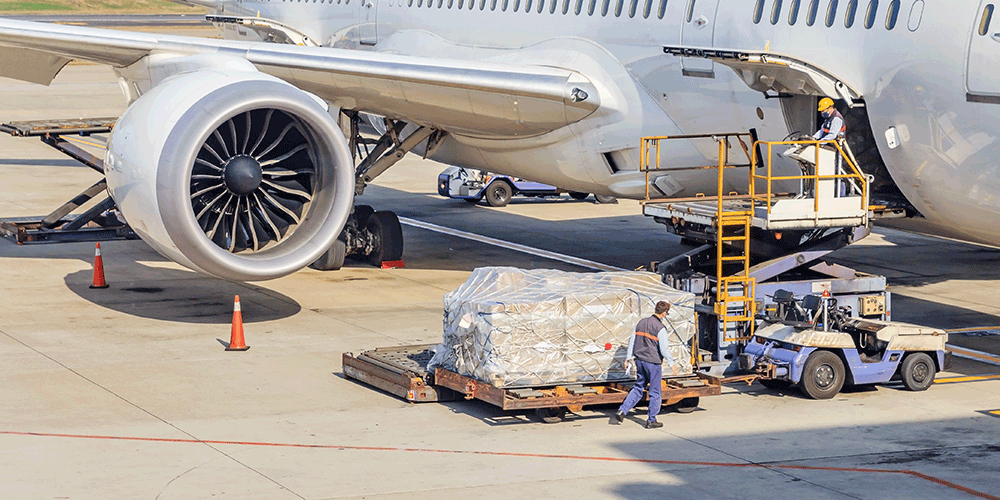
Learning New Regulations
Learning a new transport regulation is tough. Even if you are familiar with other modes, learning the intricacies of a new one is difficult. In our courses, we spend a good deal of time going over a basic shipping description (ISHP) and breaking down each part of it.
Time is also spent on UN versus ID numbers, proper shipping names, hazard classes, and packing groups. We also bring in the Dangerous Goods List (DGL) and talk about where to find the ISHP. This leads to a discussion on technical names, aircraft types, and other symbols shown in the DGL. Eventually we land on the topic of Special Provisions in Column M.
We explain these are additional requirements for any given entry or as I like to call it – the curve balls. Some are helpful and relieve parts of the regulation while others complicate it.
Note – If you ship dangerous goods and are having some trouble with the terms used above, you may need training.
New Special Provisions
IATA added some new Special Provisions a few years ago that cause additional stress for new shippers. I am referring to the A800 series. There are 5 special provisions there starting with A801 and going up to A805. So, what is the big deal with these and new shippers? If we take a moment to look at each one, you’ll see why someone new to transport would be easily frustrated or confused.
Special Provision A801:
- Regulatory Text
- A technical name is not needed for this entry if it is a controlled substance and a national law or international Convention prohibits its disclosure (see 4.1.2.1(d)).
- UN Numbers Impacted
- This applies to all packing groups of UN1544 Alkaloids, solid n.o.s., and UN3140 Alkaloids, liquid n.o.s.
- Problem
- Those two entries have the star symbol beside them in the DGL indicating a technical name(s) is needed. However, A801 tells us a technical name isn’t needed “if it is a controlled substance”. It then never really defines or describes what a controlled substance is.
- Helpful Hint
- Some examples of alkaloids are caffeine, codeine, cocaine, and morphine. It makes sense not to list those as technical names then because it could attract some unwanted attention to your shipment.
Special Provision A802:
- Regulatory Text
- Notwithstanding the absence of a packing group in column E, substances and articles assigned to these entries must be packed in UN Specification packagings that meet packing group II performance standards. This does not apply when aerosols are prepared for transport in accordance with the limited quantity provisions.
- Note: For the purposes of identification and documentation the packing group as shown in Table 4.2 applies and is to be used in the completion of the Shipper’s Declaration, regardless of a packaging required to meet a higher packing group performance standard as indicated above.
- UN Numbers Impacted
- Multiple
- Problem
- Many believe that if there is no packing group listed in the DGL, it means UN Specification Packaging is not needed and/or any additional information needed for picking packaging would be in the packing instruction. However, A802 requires a shipper to use packaging that meets Packing Group II level standards. But, you don’t list the II on the shipper’s declaration as part of your basic shipping description.
- Helpful Hint
- Your UN Specification Packaging must have an X or Y as part of its code and the shipping description is exactly what the DGL indicates it is with no changes. In most, if not all cases, this packaging requirement will be listed in the actual packing instruction.
Special Provision A803:
- Regulatory Text
- Notwithstanding the assignment of a packing group III in column E, substances assigned to these entries must be packed in UN Specification packagings that meet packing group II performance standards. This does not apply when the substances are prepared for transport in accordance with the limited quantity provisions.
- Note: For the purposes of identification and documentation the packing group as shown in Table 4.2 applies and is to be used in the completion of the Shipper’s Declaration, regardless of a packaging required to meet a higher packing group performance standard as indicated above.
- UN Numbers Impacted
- Multiple. Many are Class 8 materials in Packing Group III.
- Problem
- Here the DGL tells us the Packing Group is III. New shippers will then choose to use a UN Specification Packaging with a Z as part of the code. However, A803 requires a shipper to use packaging that meets Packing Group II level standards. In essence, more secure packaging. But, you are still required to list the III on the shipper’s declaration on your paperwork.
- Helpful Hint
- Your UN Specification Packaging must have an X or Y as part of its code. The shipping description will maintain its III for the packing group, which is exactly what the DGL indicates it is. In most if not all cases, this packaging requirement will be listed in the actual packing instruction.
Special Provision A804:
- Regulatory Text
- Notwithstanding the assignment of a packing group III in column E, substances assigned to these entries must be packed in UN Specification packagings that meet packing group I performance standards.
- For the purposes of identification and documentation the packing group as shown in Table 4.2 applies and is to be used in the completion of the Shipper’s Declaration, regardless of a packaging required to meet a higher packing group performance standard as indicated above.
- UN Numbers Impacted
- UN2803 Gallium, and UN2809 Mercury: Both of which are liquids at room temperature and can quickly dissolve aluminum structures.
- Problem
- Again, the DGL tells us the Packing Group is III meaning for all other cases you should use UN Specification Packaging with a Z as part of the code. However, A804 requires a shipper to use packaging that meets Packing Group I level standards. A much more secure packaging than one would think is needed. And, you are still required to list the III on the shipper’s declaration on your paperwork.
- Helpful Hint
- Your UN Specification Packaging can only have an X as part of its code. The shipping description will maintain the III for the packing group as the DGL says. Again, this packaging requirement will be listed in the actual packing instruction.
Special Provision A805:
- Regulatory Text
- Notwithstanding the requirement to package UN1845 in accordance with Packing Instruction 954, Carbon dioxide, solid (dry ice) may be placed directly within an overpack that meets the requirements of Packing Instruction 954 to cool other dangerous goods. The other dangerous goods must be packaged in accordance with the relevant packing instructions. See Figure 8.1.J.
- UN Numbers Impacted
- UN1845 Dry Ice, or UN1845 Carbon dioxide, solid
- Problem
- When dry ice is used as a coolant for dangerous goods, Packing Instruction 954 tells a shipper to put the dry ice inside the UN packaging. This provision though allows you to put the package into an overpack and then put the dry ice AROUND it. Both the dry ice and the package are in the overpack but not in the same package.
- Helpful Hint
- Anytime dry ice is used for air shipments, there are going to be some strangeness. Take time to fully understand the packaging and documentation for dry ice on its own before using it as a coolant.
Take heart, shippers everywhere. The more you work within a transport regulation and specifically for your products, the easier it gets. If you ever get stuck, give our helpdesk a call. We have great staff who is cross trained in all of the transport regulations and has over 200 years of combined experience. We also offer a variety of different training options to fit your needs and budget. There are public courses at ICC, on-site courses at your facility, live webinars, online training, and even kits to train your own employees. Check us out!





